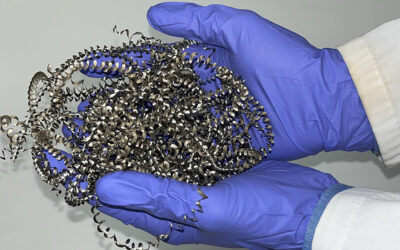The Institute of Plastics Processing (IKV) in Industry and the Skilled Crafts at RWTH Aachen University is developing a new foaming technology for the production of foamed polyurethane mouldings. The new technology enables the use of CO2 as the blowing agent. It is regarded as the most promising and environmentally friendly alternative to chemical foaming with water, which results in hard segments and embrittlement in the polyurethane part. Until now, however, the use of large amounts of CO2 as the blowing agent led to a lack of control of the foaming process.
Initial tests already show that the new CO2 foaming process results in much lower densities than have been possible until now. To achieve controlled expansion of the reaction mix, a gas counterpressure is generated in the foaming mould. This cavity pressure, which is above the vapour pressure of the dissolved CO2, prevents early foaming-up. With a specific reduction of the cavity pressure, the timing and speed of the expansion process can be controlled. This prevents early expansion and collapse of the foam.
For this process, the IKV scientists cooperated with PME fluidtec GmbH, Ettenheim, in the development of a sealed-off mould with valve technology and a corresponding process control. Furthermore, the high-pressure HS500 metering machine from Hennecke GmbH, Sankt Augustin, was adapted to the new process technology.
IKV has successfully started up the technology. Preliminary trials have already yielded flexible foam parts with a density of around 90 kg/m³. The process thus opens the door to expanding the range of individually adjustable mechanical properties of the PU foam. The material foamed with CO2 can be made more flexible than one that is foamed chemically. In addition, it significantly reduces the amount of isocyanate that was needed for the conventional chemical foaming reaction, and thus helps to reduce costs.
Source: IKV Aachen


















